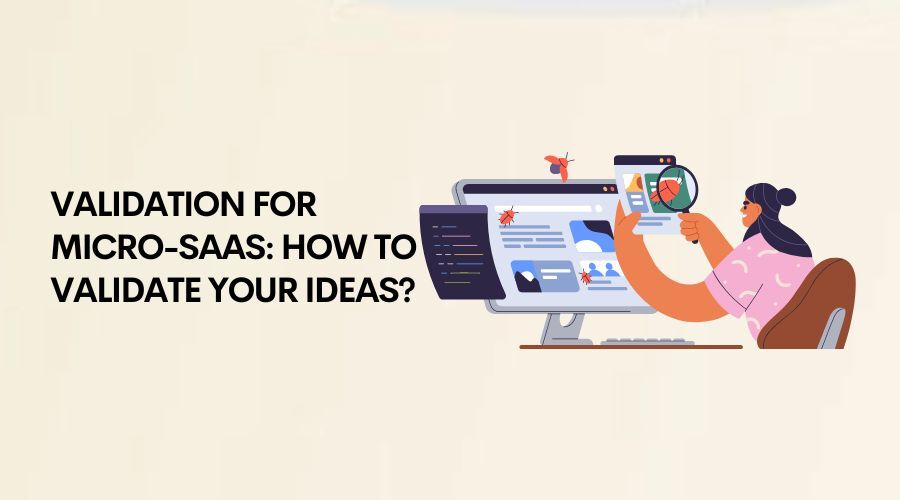In the world of micro SaaS (Software as a Service) startups, turning a brilliant idea into a successful reality is a thrilling journey. However, before you embark on this adventure, it’s crucial to take a step back and ask yourself: “Is my idea worth pursuing?” Validating your micro SaaS concept is the key to minimizing risks and increasing your chances of success. In this article, we’ll explore the critical process of idea validation, helping you ensure that your micro SaaS idea is worth building.
Before investing time and resources into building your micro SaaS product, it’s essential to validate your idea. Idea validation involves conducting research and tests to confirm that there is a demand for your product, and it solves a real problem for your target audience.
1. Identify Your Target Audience:
- Start by defining your target audience. Who are the potential users or customers for your micro SaaS product? Understanding their needs and pain points is the first step in validation.
2. Conduct Market Research:
- Research your niche thoroughly. Identify competitors, assess their offerings, and understand the market trends. Look for gaps or areas where your product can excel.
3. Create a Minimum Viable Product (MVP):
- Instead of building a fully-featured product from the start, create a minimum viable product (MVP) with the core functionality. This allows you to test your idea with minimal investment.
4. Seek Feedback:
- Share your MVP with a select group of potential users or early adopters. Collect their feedback and use it to refine your product. Pay close attention to their pain points and suggestions.
5. Conduct Surveys and Interviews:
- Reach out to your target audience through surveys and interviews. Ask open-ended questions to gain insights into their needs, preferences, and willingness to pay for a solution like yours.
6. Build a Landing Page:
- Create a landing page or website that describes your micro SaaS product and its benefits. Use it as a tool to gauge interest and collect email sign-ups from potential customers.
7. Analyze User Behavior:
- If you have a landing page or MVP, track user behavior using analytics tools. Monitor metrics like click-through rates, sign-ups, and user interactions to understand user interest.
8. Pre-Sell Your Product:
- Consider offering pre-sales or early access discounts to validate interest and generate initial revenue. This also helps fund further development.
9. Iterate and Refine:
- Use the feedback and data gathered during the validation process to iterate and refine your product. Make improvements based on user insights.
10. Look for Red Flags: – Be vigilant about red flags during validation. If you consistently receive negative feedback or see minimal interest, it may be time to reassess your idea or pivot.
Case Study: Buffer’s Validation Journey
Buffer, the popular social media scheduling platform, offers a compelling case study in idea validation. Before building the full product, founder Joel Gascoigne created a simple landing page that described the concept of Buffer and its benefits. The landing page allowed visitors to sign up for early access.
Within a few weeks, thousands of people had signed up, demonstrating strong interest in the concept. This validation gave Joel the confidence to move forward with development, and Buffer has since grown into a successful micro SaaS business.
Conclusion: Validating your micro SaaS idea is a critical step in the journey of building a successful business. By conducting thorough research, seeking feedback, and testing your concept, you can ensure that you’re on the right track before investing significant time and resources. Idea validation minimizes risks and increases your chances of creating a product that not only solves real problems but also finds a receptive audience.



